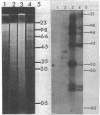Abstract
Two self-transmissible Sym(biosis) plasmids, one encoding pea-specific nodulation and nitrogen-fixation functions (plasmid pJB5JI) and the other encoding clover-specific nodulation and nitrogen-fixation functions (plasmid pBR1AN) were used to determine whether the symbiotic genes encoded on these plasmids are expressed in various members of the Rhizobiaceae. The host specificity of Rhizobium trifolii and R. leguminosarum Sym plasmid-cured strains could be directly determined by the transfer to these strains of the appropriate Sym plasmid. The nodulation of white clovers was restored by either plasmid pJB5JI or pBR1AN when these plasmids were transferred to two transposon Tn5-induced hair-curling (Hac-) R. trifolii mutants. In addition, lucerne nodulation was restored to a Hac- R. meliloti mutant when either plasmid pBR1AN or pJB5JI was transferred to this strain. The phenotype of nonmucoid (Muc-) Rhizobium mutants, which had altered cell surfaces, was not influenced by the transfer to these strains of plasmid pBR1AN or plasmid pJB5JI.
Full text
PDF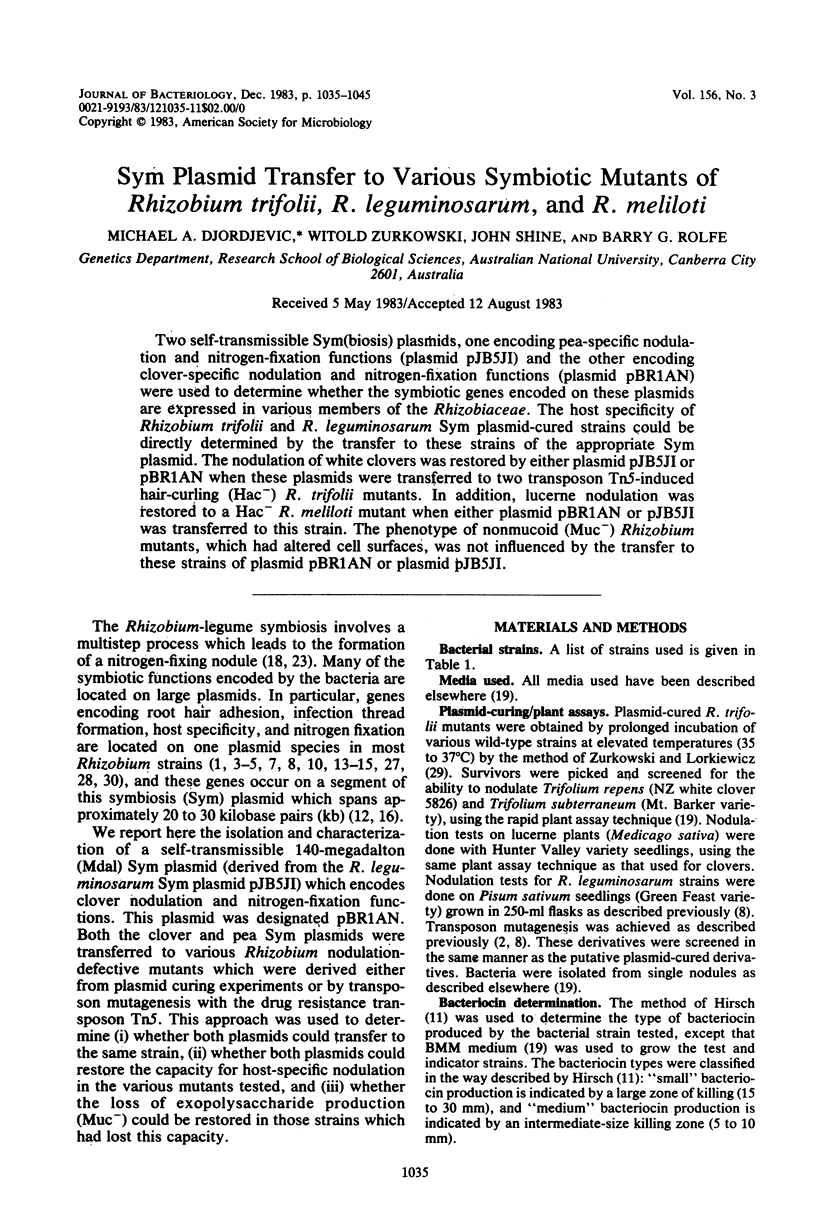
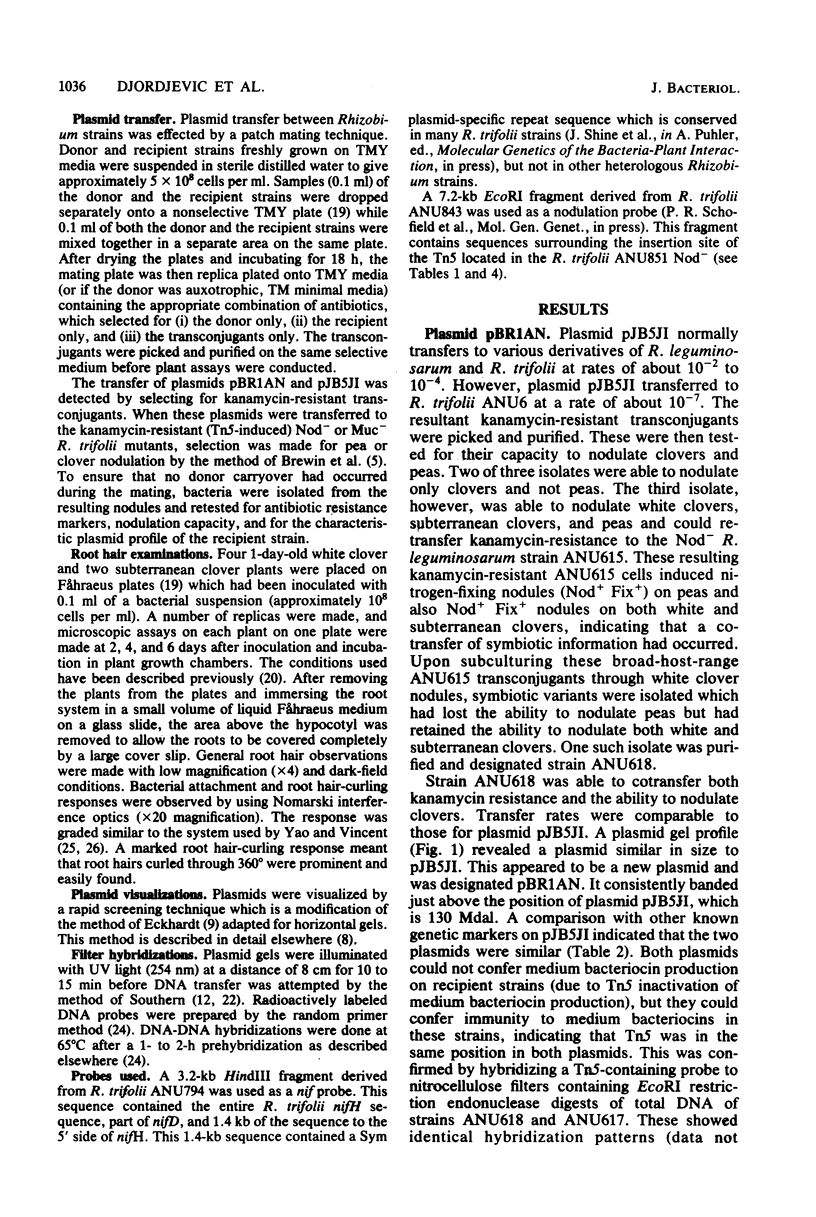
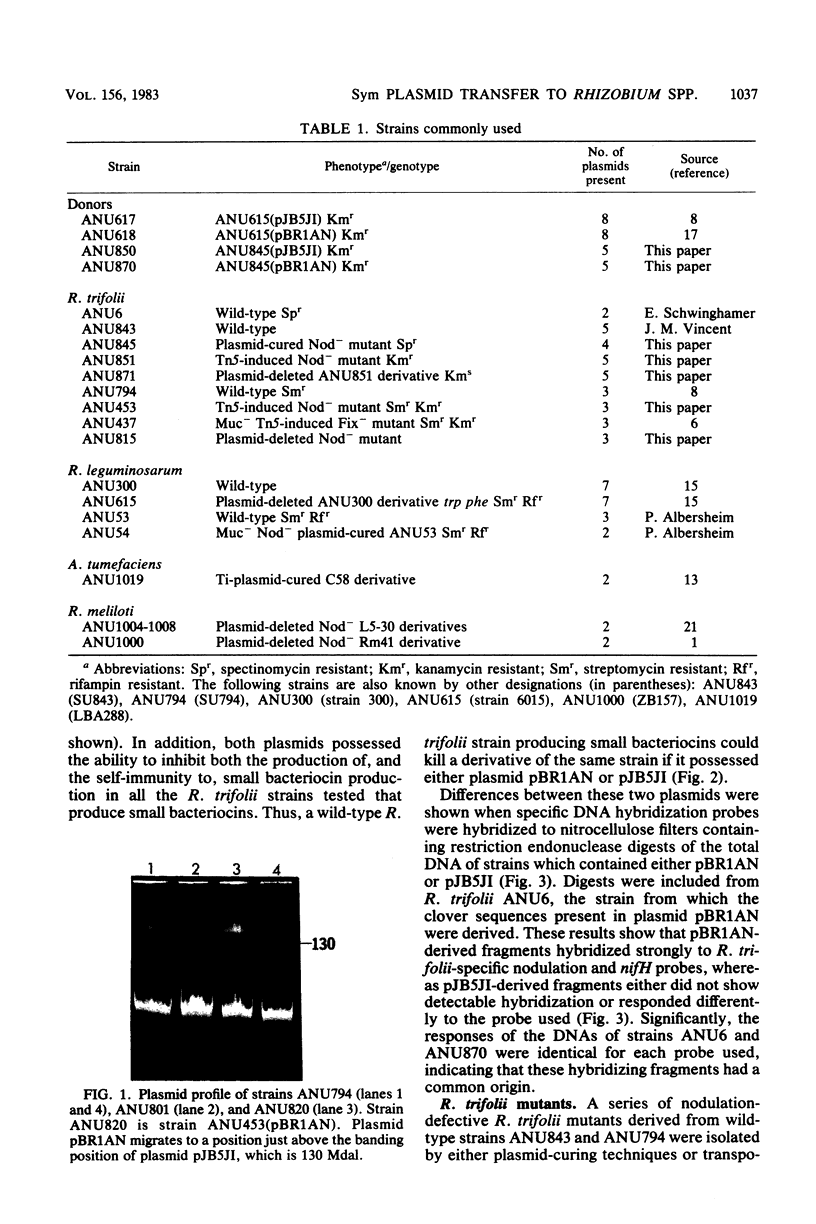
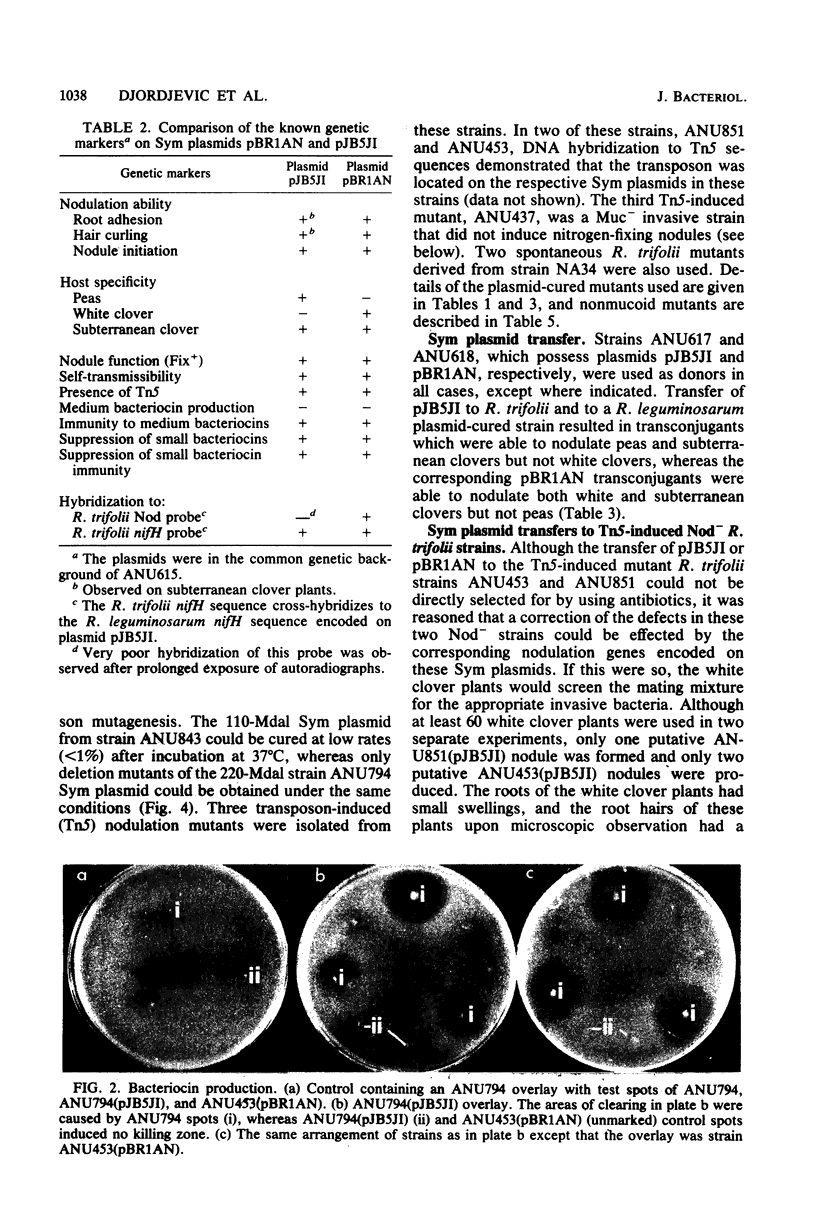
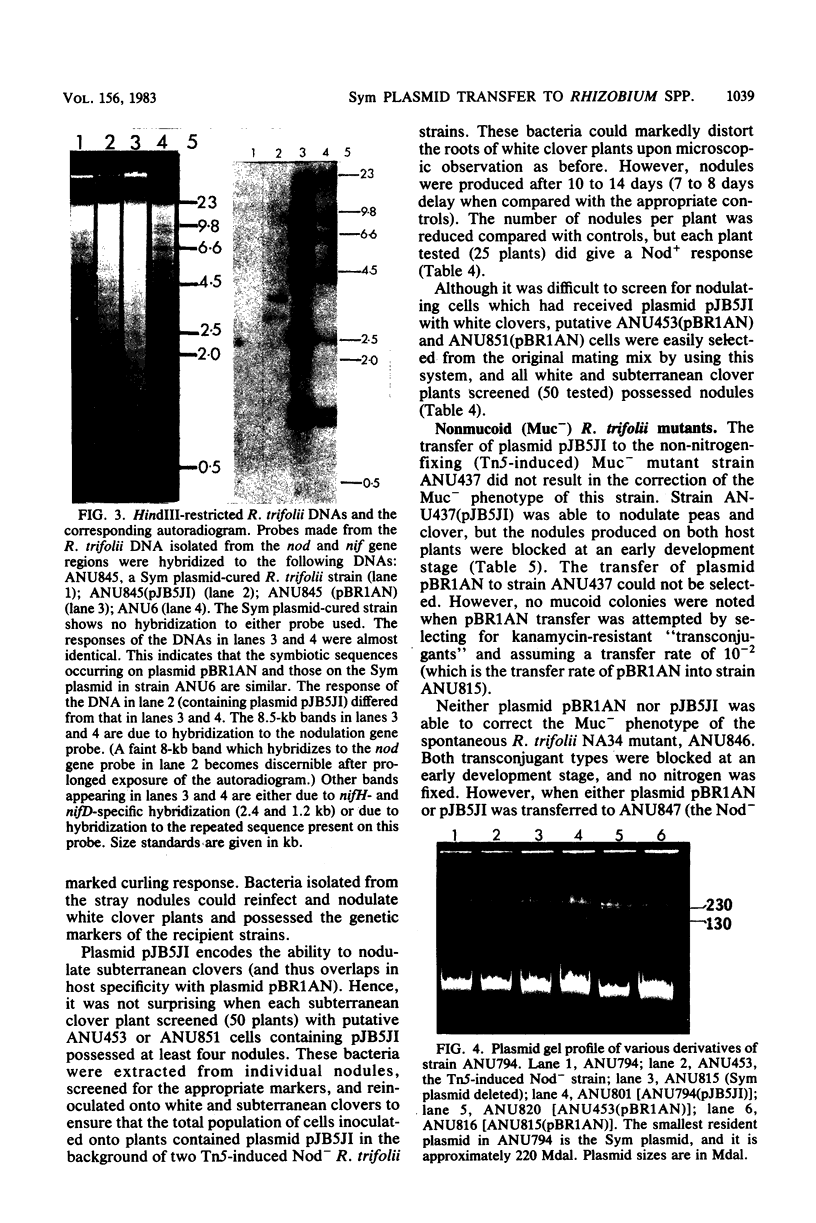
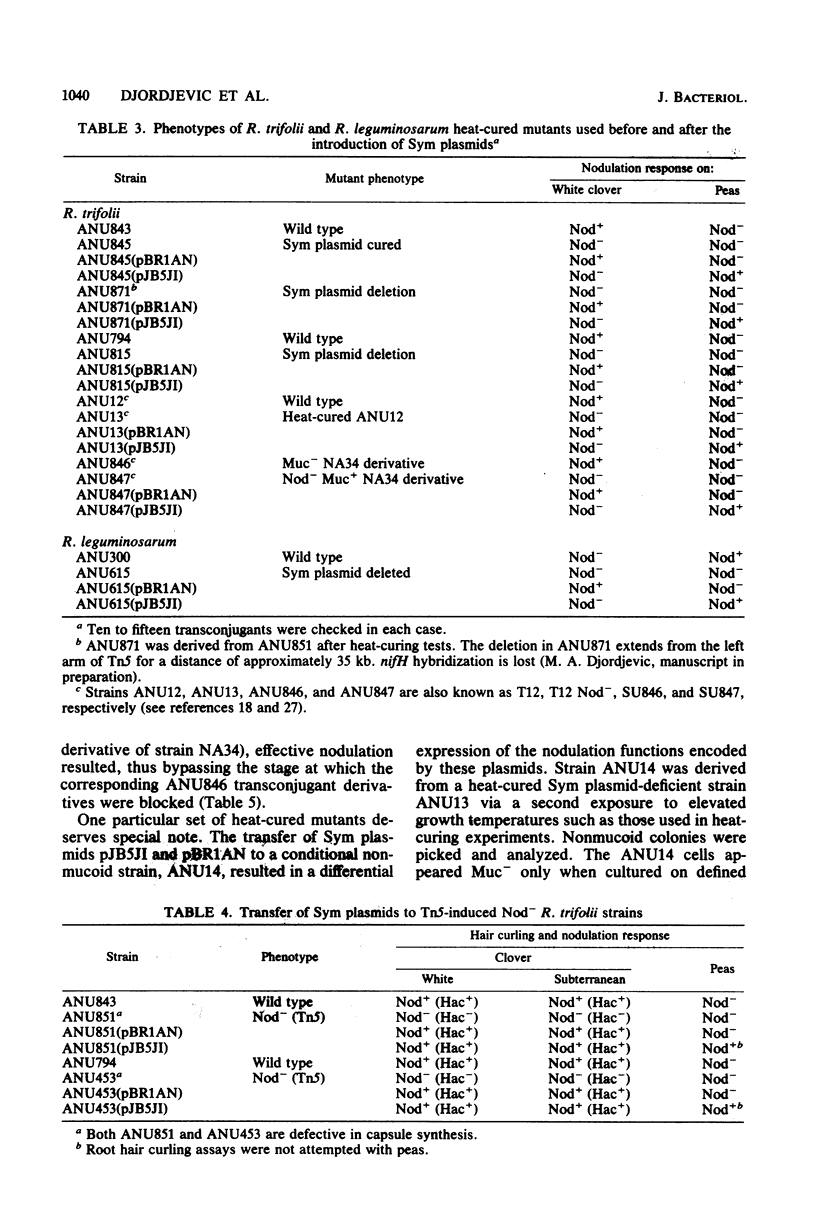
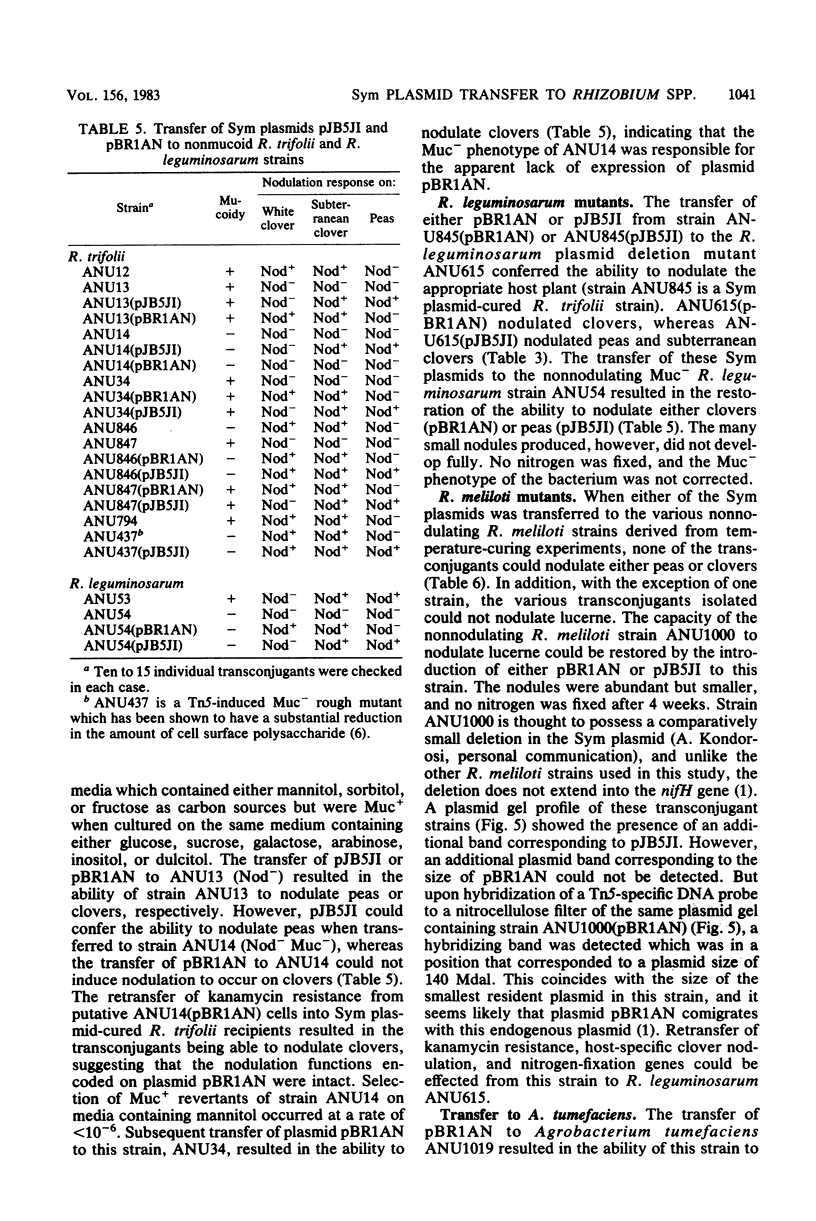
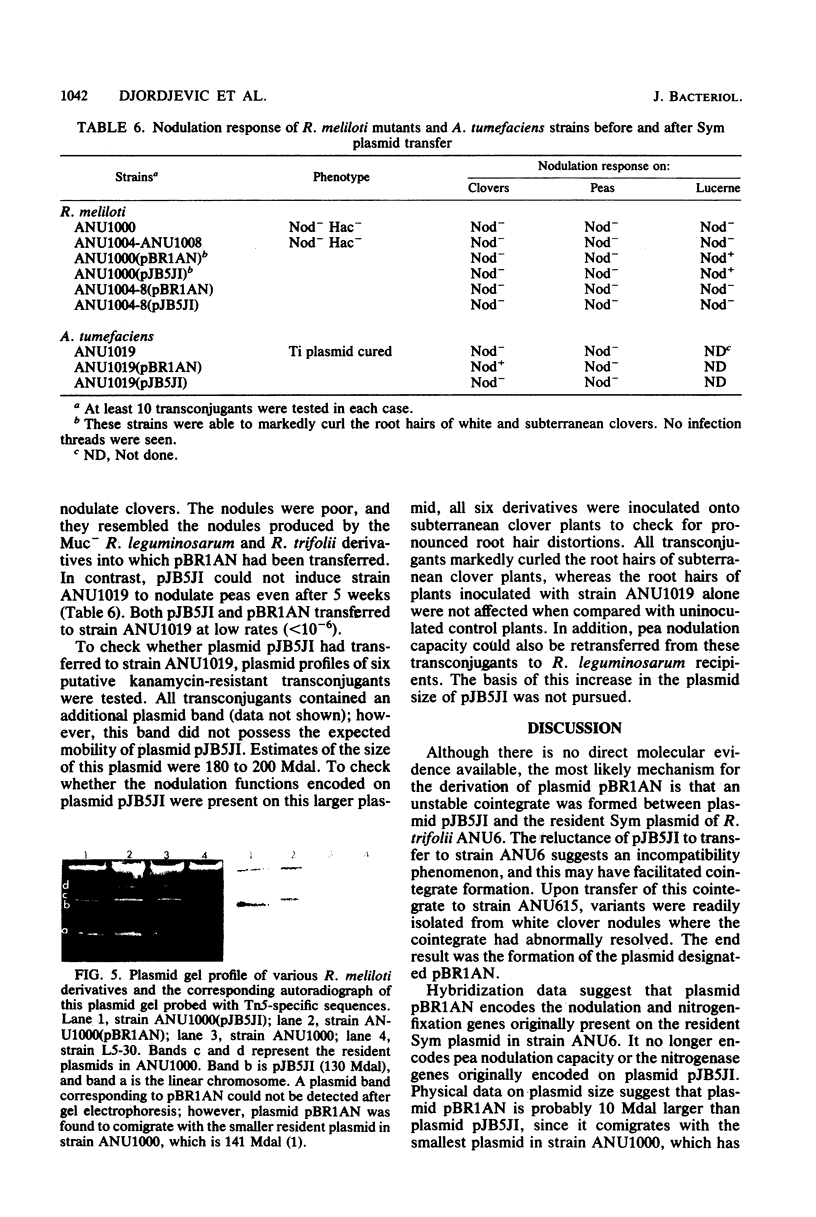
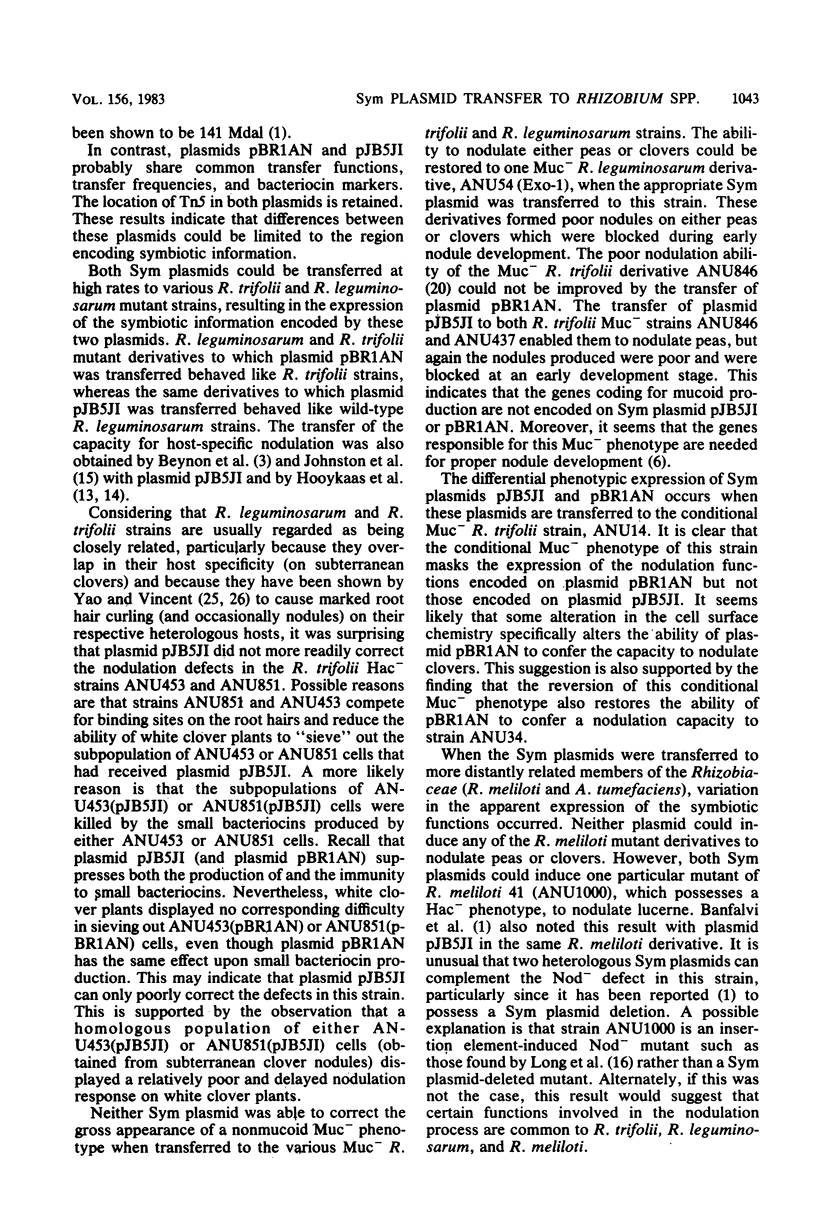
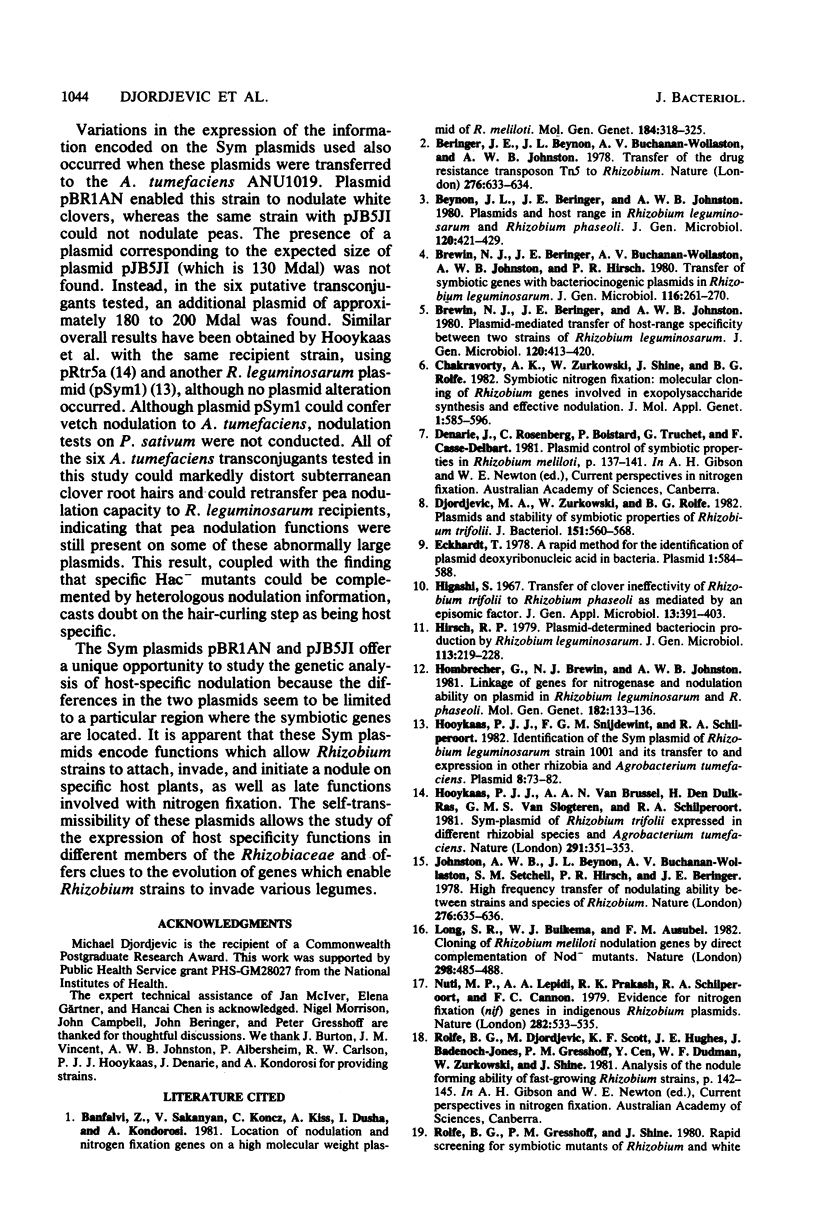

Images in this article
Selected References
These references are in PubMed. This may not be the complete list of references from this article.
- Bánfalvi Z., Sakanyan V., Koncz C., Kiss A., Dusha I., Kondorosi A. Location of nodulation and nitrogen fixation genes on a high molecular weight plasmid of R. meliloti. Mol Gen Genet. 1981;184(2):318–325. doi: 10.1007/BF00272925. [DOI] [PubMed] [Google Scholar]
- Chakravorty A. K., Zurkowski W., Shine J., Rolfe B. G. Symbiotic nitrogen fixation: molecular cloning of Rhizobium genes involved in exopolysaccharide synthesis and effective nodulation. J Mol Appl Genet. 1982;1(6):585–596. [PubMed] [Google Scholar]
- Djordjevic M. A., Zurkowski W., Rolfe B. G. Plasmids and stability of symbiotic properties of Rhizobium trifolii. J Bacteriol. 1982 Aug;151(2):560–568. doi: 10.1128/jb.151.2.560-568.1982. [DOI] [PMC free article] [PubMed] [Google Scholar]
- Eckhardt T. A rapid method for the identification of plasmid desoxyribonucleic acid in bacteria. Plasmid. 1978 Sep;1(4):584–588. doi: 10.1016/0147-619x(78)90016-1. [DOI] [PubMed] [Google Scholar]
- Hooykaas P. J., Snijdewint F. G., Schilperoort R. A. Identification of the Sym plasmid of Rhizobium leguminosarum strain 1001 and its transfer to and expression in other rhizobia and Agrobacterium tumefaciens. Plasmid. 1982 Jul;8(1):73–82. doi: 10.1016/0147-619x(82)90042-7. [DOI] [PubMed] [Google Scholar]
- Rolfe B. G., Gresshoff P. M., Shine J., Vincent J. M. Interaction Between a Non-Nodulating and an Ineffective Mutant of Rhizobium trifolli Resulting in Effective (Nitrogen-Fixing) Nodulation. Appl Environ Microbiol. 1980 Feb;39(2):449–452. doi: 10.1128/aem.39.2.449-452.1980. [DOI] [PMC free article] [PubMed] [Google Scholar]
- Rosenberg C., Boistard P., Dénarié J., Casse-Delbart F. Genes controlling early and late functions in symbiosis are located on a megaplasmid in Rhizobium meliloti. Mol Gen Genet. 1981;184(2):326–333. doi: 10.1007/BF00272926. [DOI] [PubMed] [Google Scholar]
- Southern E. M. Detection of specific sequences among DNA fragments separated by gel electrophoresis. J Mol Biol. 1975 Nov 5;98(3):503–517. doi: 10.1016/s0022-2836(75)80083-0. [DOI] [PubMed] [Google Scholar]
- Whitfeld P. L., Seeburg P. H., Shine J. The human pro-opiomelanocortin gene: organization, sequence, and interspersion with repetitive DNA. DNA. 1982;1(2):133–143. doi: 10.1089/dna.1.1982.1.133. [DOI] [PubMed] [Google Scholar]
- Zurkowski W. Specific adsorption of bacteria to clover root hairs, related to the presence of the plasmid pWZ2 in cells of Rhizobium trifolii. Microbios. 1980;27(107):27–32. [PubMed] [Google Scholar]





